2
marzoThe Autonomous Vacuum Mistake That Every Beginning Autonomous Vacuum User Makes
Exploring the Future of Home Cleaning: Autonomous Vacuum Robots
In the ever-evolving landscape of home innovation, autonomous vacuum robotics have actually emerged as a game-changer for modern homes. These smart gadgets are not just a high-end; they are ending up being increasingly necessary for hectic households and people who value tidiness and performance. This post delves into the functionalities, advantages, and advancements of autonomous vacuum robots, offering a thorough guide for anybody considering including one to their home.

What Are Autonomous Vacuum Robots?
Autonomous vacuum robots that vacuum and mop, typically referred to as best robotic mop and vacuum vacuums or robovacs, are intelligent cleaning gadgets that run without human intervention. Geared up with innovative sensing units, mapping innovation, and AI algorithms, these robotics can navigate through a home, identify and tidy dirt and debris, and return to their charging dock when the battery is low. They are developed to maintain a consistent level of tidiness in different environments, consisting of wood floors, carpets, and tiles.
Key Features and Technologies
Mapping and Navigation
- Laser Mapping (LIDAR): Many high-end robovacs utilize LIDAR innovation to create a detailed map of the home. This allows the robot to navigate efficiently, preventing obstacles and covering every inch of the floor.
- Visual Simultaneous Localization and Mapping (vSLAM): Similar to LIDAR, vSLAM uses cameras and image processing to map and browse the home. This technology is frequently more affordable and similarly reliable in many situations.
Sensing Units and Obstacle Avoidance
- Bump Sensors: These sensors discover when the robot has actually bumped into an object, enabling it to change instructions to avoid additional crashes.
- Cliff Sensors: These sensors prevent the robot from falling off stairs or other raised surfaces by identifying sharp drops.
- Dust Detection: Some designs are geared up with sensors that can identify dirt and particles, permitting the robot to concentrate on locations that require more cleaning.
Cleaning Performance
- Brush Systems: Robovacs feature various brush setups, consisting of side brushes and main brushes, to effectively tidy various surfaces.
- Suction Power: The suction power of a robovac is crucial for its cleaning effectiveness. Greater suction power is typically needed for carpets and pet hair.
- Filter Systems: Most designs have HEPA filters to trap fine particles and improve indoor air quality.
Connection and Control
- Wi-Fi Integration: Many robovacs can be controlled via a smart device app, allowing users to set up cleanings, screen progress, and receive informs.
- Voice Assistants: Compatibility with voice assistants like Amazon Alexa and Google Assistant includes another layer of convenience, enabling users to start or stop cleaning with simple voice commands.
Benefits of Autonomous Vacuum Robots
Convenience
- Autonomous vacuums can be scheduled to clean up at specific times, making sure a regularly clean home without manual effort.
- Users can control the robot from another location, making it simple to start a cleaning session from anywhere.
Effectiveness
- These robots can clean locations that are tough to reach or ignored, such as under furnishings and in corners.
- They utilize smart algorithms to enhance cleaning paths, reducing the time and energy needed for thorough cleaning.
Energy and Cost Savings
- Routine cleaning can assist extend the life of carpets and floorings, possibly conserving cash on replacements.
- Lots of robovacs are energy-efficient, utilizing less power compared to conventional vacuum.
Health Benefits
- Effective cleaning can decrease dust, allergens, and germs, improving indoor air quality and creating a healthier living environment.
- HEPA filters can catch great particles that are frequently missed out on by traditional cleaning methods.
Advancements and Future Trends
Expert System and Machine Learning
- AI and artificial intelligence are being integrated into robovacs to enhance their decision-making and versatility. For example, some models can learn the design of a home in time and adjust their cleaning patterns appropriately.
Multi-Floor Cleaning
- Advanced designs can navigate between several floorings, making them suitable for larger homes and homes.
Self-Emptying Systems
- Some high-end robovacs come with self-emptying dustbins, which can hold up to several weeks' worth of dirt before needing to be cleared.
Enhanced Battery Life
- Battery technology is continuously advancing, leading to longer functional times and quicker charging cycles.
Integration with Smart Home Systems
- Robovacs are increasingly being incorporated with smart home systems, permitting seamless control alongside other gadgets like smart lights and thermostats.
Frequently Asked Questions About Autonomous Vacuum Robots
Q: Are autonomous vacuum robotics suitable for homes with family pets?
- A: Yes, numerous robovacs are developed to deal with pet hair and dander. Designs with strong suction power and specialized brush systems are especially efficient for pet owners.
Q: How frequently should I clean my robovac?
- A: It is advised to clean the brushes, filters, and dustbin after each usage to guarantee ideal performance. In addition, routine deep cleaning of the robot's elements can assist maintain its performance.
Q: Can robovacs clean stairs?
- A: Most robovacs are created to clean flat surface areas and will prevent stairs due to cliff sensing units. However, some designs can browsing single actions and even entire staircases, though this is less typical.
Q: Are robovacs loud?
- A: Most robovacs are developed to operate silently, but the sound level can differ depending on the design and suction power. Some designs offer a "peaceful mode" for minimal disturbance.
Q: Can robovacs replace a traditional automatic vacuum and mop?
- A: While robovacs are outstanding for preserving daily cleanliness, they might not be as effective as traditional vacuum for deep cleaning or dealing with big amounts of dirt and debris. Nevertheless, they can considerably minimize the frequency of manual cleaning.
Tips for Choosing the Right Autonomous Vacuum Robot
Think about the Size of Your Home
- Choose a design that can effectively clean up the square footage of your home. Some robovacs are better matched for small apartments, while others are created for bigger homes.
Examine the Terrain
- If your home has multiple floorings or different kinds of floor covering, try to find a robovac that can handle these challenges. Designs with strong suction power and flexible brush systems are perfect for homes with carpets and pet hair.
Check Battery Life
- Make sure the robot has a battery life that suffices for cleaning your home in one go. Some designs have longer battery life and can return to their charging dock to charge and resume cleaning.
Review Connectivity Options
- If you wish to control the robot from another location or incorporate it with your smart home system, try to find designs with Wi-Fi and voice assistant compatibility.
Consider Additional Features
- Functions like self-emptying, allergen filtration, and virtual boundaries can enhance the user experience and efficiency of the robovac.
Maintenance and Troubleshooting
Regular Cleaning
- Tidy the brushes, filters, and dustbin after each usage to avoid clogging and maintain efficiency.
Examine for Obstacles
- Guarantee that the robot's course is without barriers like little items, cords, and furniture. This can assist prevent the robot from getting stuck or damaged.
Software application Updates
- Keep the robot's software application as much as date to take advantage of the most recent functions and improvements.
Typical Issues and Solutions
- Robot vacuum reviews Gets Stuck: Clear the location of challenges and check for any twisted cords or particles in the brushes.
- Low Battery: Ensure the robot is going back to its charging dock which the dock is functioning appropriately.
- Filthy Filters: Replace or clean the filters as suggested by the manufacturer.
Autonomous vacuum robotics represent a substantial development in home cleaning technology. They offer benefit, efficiency, and health benefits, making them an important addition to contemporary families. As innovation continues to evolve, these robotics are becoming smarter, more powerful, and more incorporated into our every day lives. Whether you are a hectic professional, a pet owner, or simply someone who values a tidy and organized home, an autonomous vacuum robot can assist you achieve your cleaning goals with minimal effort.
By considering the essential functions, benefits, and upkeep requirements, you can pick the ideal robovac for your requirements and delight in a cleaner, more comfy living area. The future of home cleaning is here, and it is smarter than ever.



Reseñas